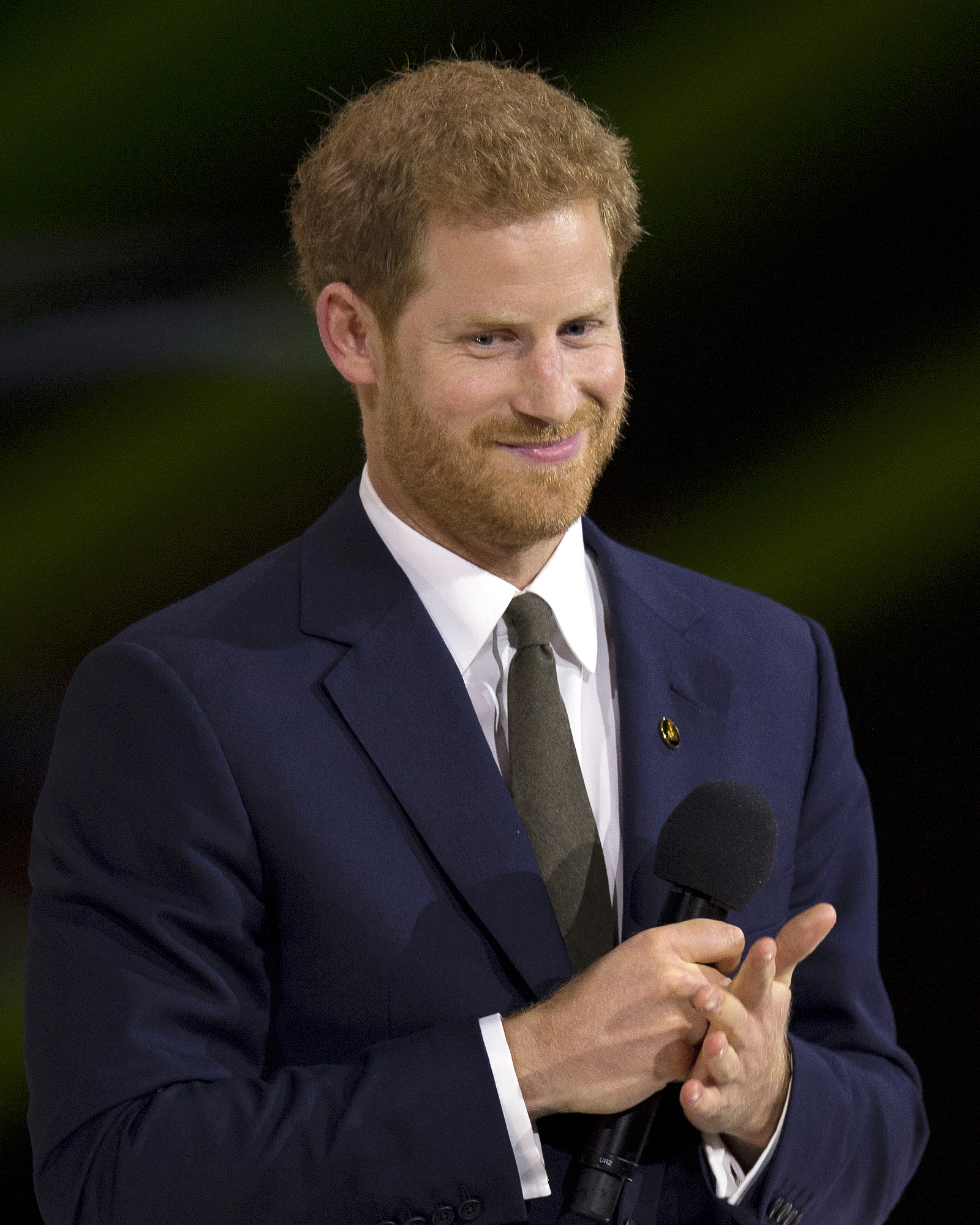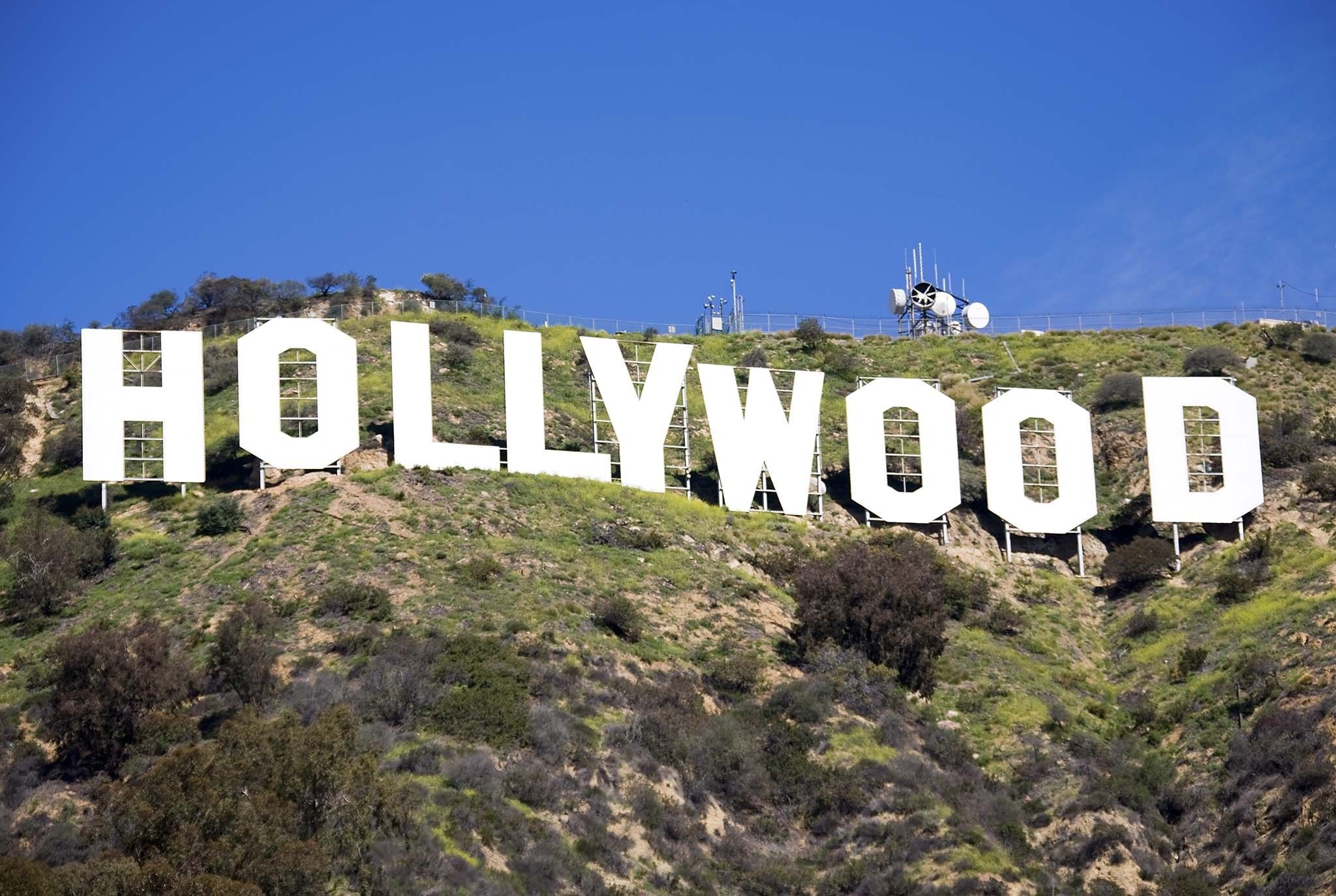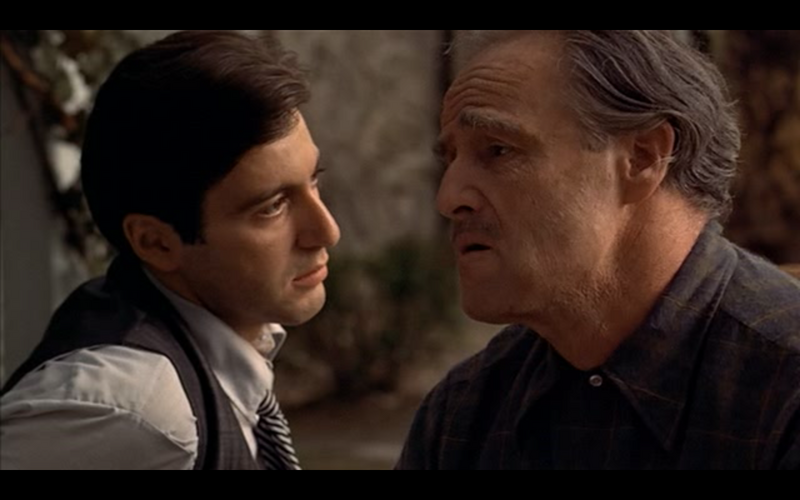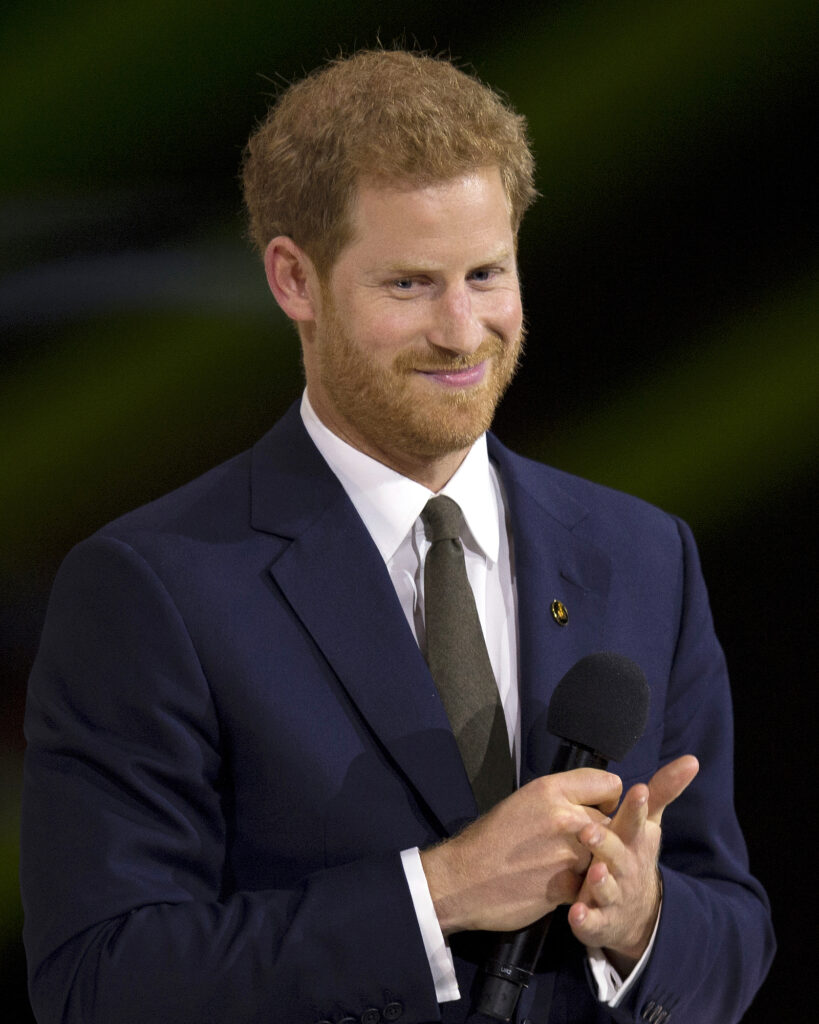
In the swirling vortex of royal news and transatlantic narratives, Prince Harry finds himself navigating a particularly intricate period, one that sees him seemingly pulled between two worlds. Recent months have offered tantalizing glimpses into a man grappling with his past, present, and future, particularly highlighted by a significant meeting with his father and a surprising visit to a war-torn nation. These events, while outwardly portraying his continued commitment to humanitarian efforts, also underscore a deeper, more personal struggle.
Indeed, the Duke of Sus appears to be at a critical juncture, with his life in America becoming increasingly involved, yet the allure of his homeland, and the life he left behind in 2020, exerting a powerful gravitational pull. This push and pull creates a fascinating dynamic, not just for him personally, but for his marriage to Meghan, the Duchess of Sussex, as well. It’s a narrative rich with personal ambition, familial duty, and the ever-present glare of public scrutiny.
Today, we embark on an analytical journey, peeling back the layers of recent events to understand the complex tapestry of Prince Harry’s life right now. From quiet reconciliations and daring humanitarian missions to the very foundations of his marriage and the long shadow of his past actions, we’ll delve into the ‘why’ and ‘how’ behind the headlines, exploring the fascinating crossroads where the Duke of Sus currently stands. It’s an insightful look into a very public life, brimming with both challenge and undeniable purpose.
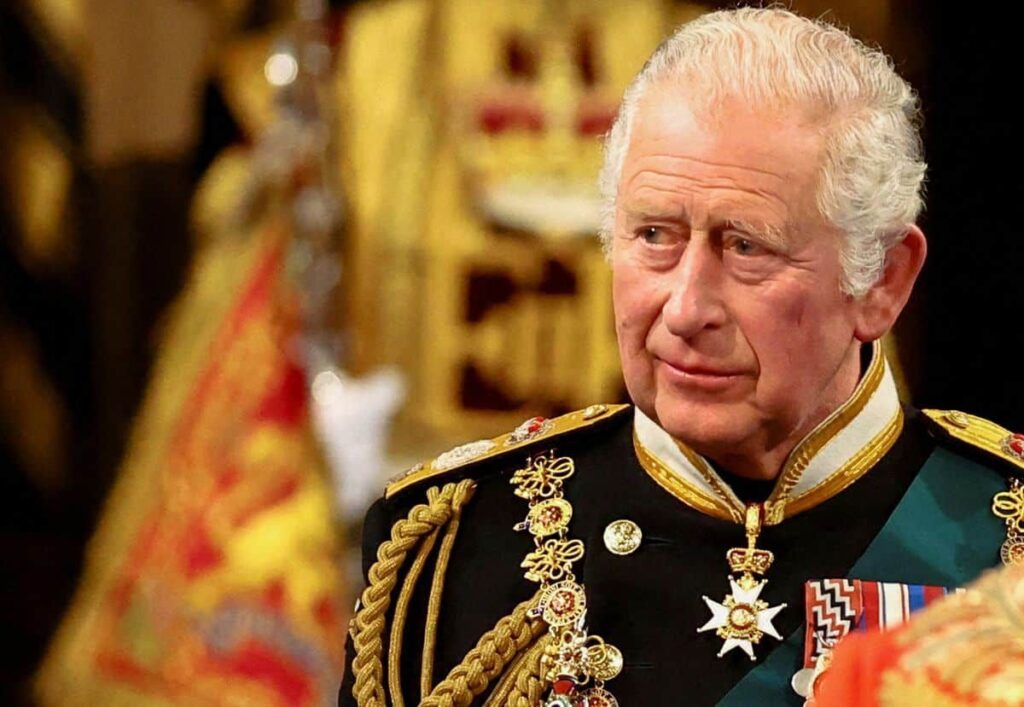
1. **The Recent Reconciliation Attempt with King Charles III**One of the most significant developments in Prince Harry’s recent life has been the carefully orchestrated meeting with his father, King Charles III. This was no spur-of-the-moment decision, but a gathering months in the making, finally materializing around 5:20 p.m. on September 10th. Harry’s blacked-out Range Rover pulling through the gates of Clarence House, his father’s official London residence, symbolized a tangible step towards mending fractured relationships.
Lasting a mere 55 minutes, this face-to-face encounter marked their first in over 18 months, a stark indicator of the distance that has grown between them. Yet, despite its brevity, the meeting raised considerable hopes for a lasting reconciliation, especially given the monarch’s recent cancer diagnosis. It offered a poignant moment, hinting at a potential thaw in what has often been described as a frosty familial dynamic.
According to sources, this interaction deeply “galvanized” Harry. The fact that he received praise from the very press that he and Meghan have so often critiqued for hounding them out of Britain was particularly encouraging. To hear even his “worst critics say he made a gesture of goodwill toward his father has been encouraging,” a source noted, suggesting a positive shift in public perception following the meeting.
This gesture of goodwill, and the unexpected positive media reception, has instilled in Harry a renewed sense of optimism. It “gives him hope that perhaps he will be welcomed back into the royal fold,” according to the source. This desire for reintegration, even in a modified capacity, signals a potential longing to reconnect with the institutional roots he deliberately distanced himself from.
Read more about: A Royal Rollercoaster: Prince Harry’s Whirlwind Return to the U.K. Sparks Major Speculation and Family Drama!
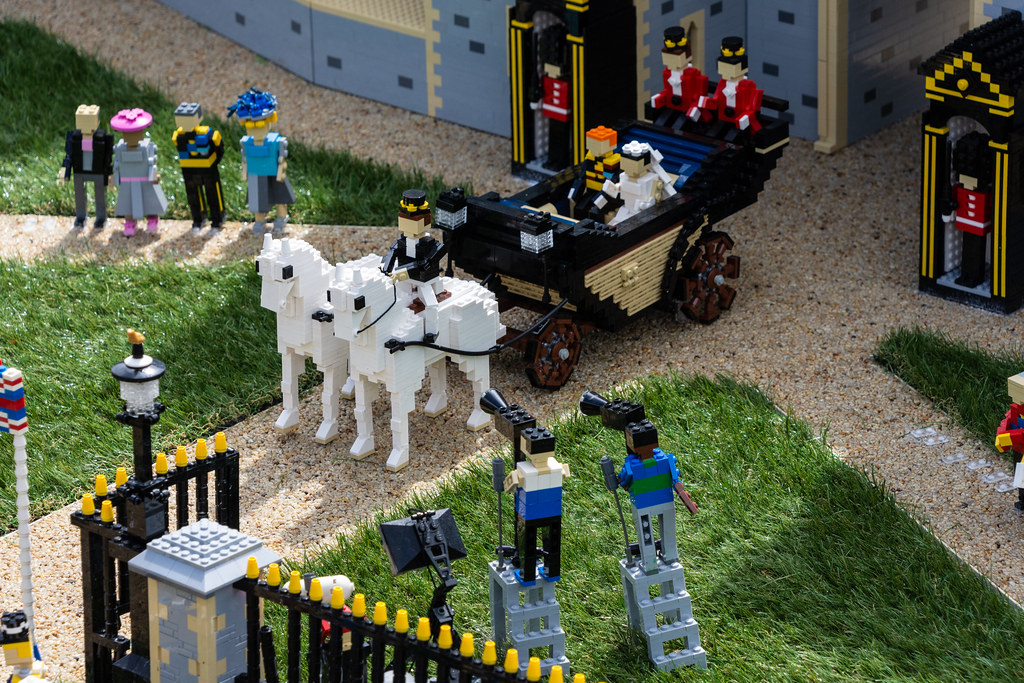
2. **Prince Harry’s Surprise Visit to Ukraine**Mere hours after his significant meeting with King Charles, Prince Harry embarked on another profoundly impactful journey: a surprise visit to war-torn Ukraine. This unexpected trip saw him supporting soldiers wounded in the country’s ongoing conflict with Russia, a testament to his unwavering commitment to veterans and their rehabilitation. It was an immediate pivot from personal reconciliation to global humanitarianism, showcasing the breadth of his priorities.
His work with veterans, channeled primarily through his Invictus Foundation’s sports rehabilitation and recovery initiatives, is clearly a profound source of fulfillment for the Duke. In a new interview with The Guardian, Harry acknowledged that the end of his decade-long military career in 2015 had left him struggling to find his way, and that Invictus had, in his own words, “saved me.” This personal connection to the cause fuels his dedication.
Logistically, the visit was meticulously planned and executed. Harry flew into Poland on a Friday morning before boarding a train to the Ukrainian capital, Kyiv, for a swift visit as part of his Invictus Games work. Notably, this marked his first visit to Kyiv, and it came just days after Russia had pounded the city with its largest air strike since the war began in February 2022, highlighting the inherent risks and the profound symbolic weight of his presence.
Before undertaking such a perilous journey, Harry ensured all necessary protocols were followed. He explicitly stated, “I had to check with my wife and the British government to make sure it was OK.” This detail underscores the complexities of his public and private life, requiring approval from both his family and relevant authorities. Upon his arrival, Harry pledged to do “everything possible” to help the thousands of Ukrainian soldiers and service personnel injured in the escalating conflict, solidifying his role as a champion for the wounded.
Read more about: A Royal Rollercoaster: Prince Harry’s Whirlwind Return to the U.K. Sparks Major Speculation and Family Drama!
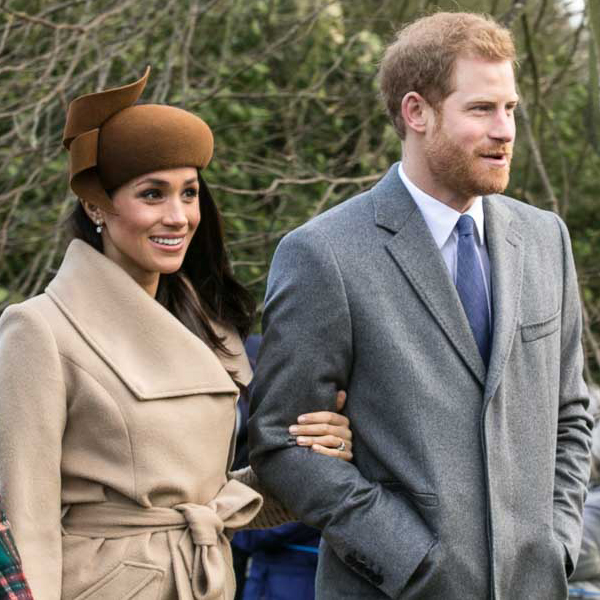
3. **Mounting Fears for the Sus Marriage**While Prince Harry’s recent U.K. trip and Ukraine visit might be seen as personal and philanthropic wins, they have concurrently brought to the forefront significant tensions within his marriage. As his transatlantic life grows more involved and his gaze increasingly turns towards his homeland, a looming challenge at home appears to be taking shape. The fundamental issue revolves around Harry’s growing desire to spend more time in the U.K., even considering a “second home base there” or “returning for good,” as a source tells Star magazine.
This proposition has reportedly left Meghan, the Duchess of Sus, “shocked.” The source indicates that Meghan is struggling with the “dawning reality” that her husband “would even consider moving back to Britain after everything they’ve been through and how much work they’ve done to rebuild their lives in America.” It’s a significant divergence in desires, leading the source to conclude, “they want different things.”
This fundamental disagreement poses a serious threat to their union. The 41-year-old prince “can be quite stubborn,” a trait that, when combined with Meghan’s equally unyielding nature – as “Meghan isn’t one to back down either” – creates a precarious situation. Observers close to the couple harbor genuine concerns, fearing that if this core disagreement “can’t be resolved, people around them fear it could lead to some explosive fights and maybe even divorce.”
Meghan’s reluctance to return to Britain is deeply rooted. She hasn’t set foot in the U.K. since Queen Elizabeth II’s 2022 funeral and reportedly has no desire to go back. Her primary concern centers on their children, Archie and Lilibet, with a source stating she’s “upset” and doesn’t want Harry taking them to England “where they aren’t safe.” She firmly believes that in the U.S., “they have a sheltered life, good schools, friends, protection.” Meghan has already “put her foot down to going back to a family that treated her so abominably,” drawing a clear line in the sand. Despite these profound differences, it is universally acknowledged that “No one is denying Harry and Meghan love each other, but they don’t see eye to eye,” underscoring the poignant nature of their current predicament.
Read more about: Behind the Royal Reconciliation: How Prince Harry’s Shifting Stance is Redefining His Relationships and Future
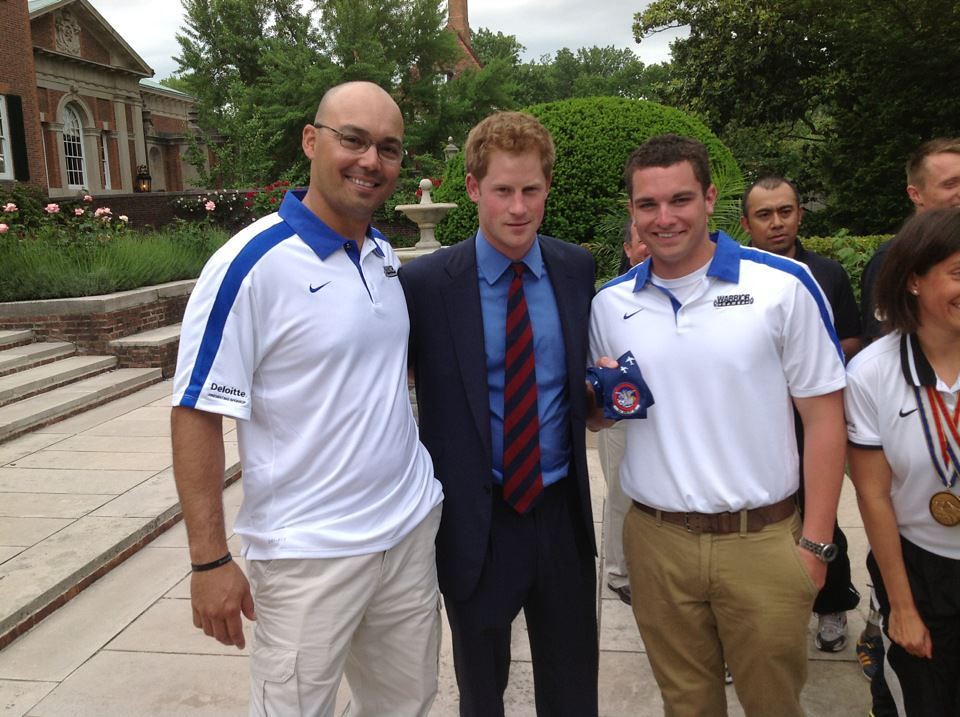
4. **The “Twin Tracks” Phenomenon: Harry’s Philanthropy vs. Meghan’s Ventures**The dynamics of Prince Harry and Meghan’s relationship, once characterized by a seemingly united front in nearly every endeavor, have undergone a significant transformation, particularly over the last year. They are now, as observers describe it, moving forward on “twin tracks.” This divergence of focus marks a notable shift from their early days in California, where their projects often seemed intertwined and mutually reinforcing.
Harry’s trajectory has seen him deeply immerse himself in his philanthropic initiatives. His Invictus Games work and other charitable endeavors frequently take him outside the United States, allowing him to highlight and expand upon his commitments to veterans and other causes. This path aligns with his stated desire to find purpose and build on the legacy he began during his military service.
Meanwhile, Meghan, the former Suits actress, has decisively returned to the vibrant world of Hollywood. This year alone, she has launched a new cooking and entertaining show, “With Love, Meghan,” and a lifestyle brand, “As Ever,” with Netflix as a key partner. These ventures mark her re-entry into the entertainment and commercial spheres, carving out a distinct professional identity separate from Harry’s more overtly charitable pursuits.
Royal biographer Tom Bower offers an incisive analysis of this evolving situation, observing that it’s clear Harry and Meghan now “want different things.” He shrewdly notes that Harry, when he comes to Britain, “becomes a focus of attention.” Yet, from Meghan’s perspective, Harry “is ‘spare’ to Meghan, or was, in her attempt to become the great television homemaker” back home. Bower further explains, “Very cleverly, Harry has separated himself from Meghan, as she did from him, but she still needs him.” The implication is clear: without the royal-adjacent curiosity, ventures like “With Love, Meghan” would lack a significant portion of their audience. This suggests a complex codependency, even as they pursue individual paths, as the couple in Montecito are “desperately looking for a new purpose in life.”
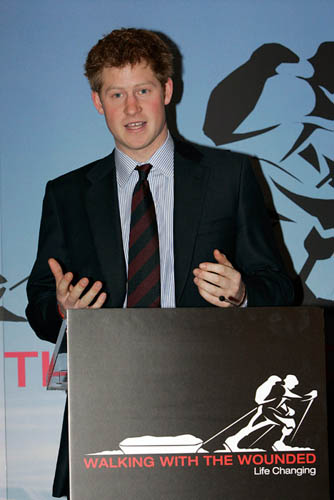
5. **The Allure of the U.K.: Harry’s Expressed Desire for a Return**A striking shift in Prince Harry’s public pronouncements regarding the United Kingdom has become increasingly evident. Only in May, after losing his prolonged legal appeal against a 2020 government decision to strip him, Meghan, and their children of automatic police protection during U.K. visits, Harry expressed profound lament. In a headline-making sit-down with BBC News, he declared, “I can’t see a world in which I would be bringing my wife and children back to the U.K. at this point,” citing fears for their safety.
His apprehension was not unfounded, as he explained that fears of violence were too great a gamble, having received “credible threats from Al Qaeda and neo-Nazi groups.” This stark assessment led to the heartbreaking admission, “I think that it’s really quite sad that I won’t be able to show my children my homeland,” despite Archie and Lilibet being sixth and seventh in line to the throne, respectively. It painted a picture of a man resigned to permanent separation for the sake of his family’s security.
However, a remarkable pivot occurred in September. When asked by The Guardian if he now desired to spend more time in the U.K. and bring his children, Harry unequivocally responded, “Yes I would.” He candidly admitted that his recent week-long visit had “definitely brought that closer,” indicating a profound re-evaluation of his previous stance. This sentiment was further underscored by his declaration, “I have always loved the U.K., and I always will love the U.K.”
This renewed connection was palpable. Harry spoke of how “It’s been good to reconnect with the causes I am passionate about. I have been able to spend some time with people that I have known for so long. It is hard to do it from far away.” Furthermore, he articulated a clear focus for the upcoming year, stating that “the focus really has to be on my dad.” This demonstrates a powerful pull towards both his personal roots and his filial duties, challenging the previous narrative of irreversible estrangement.
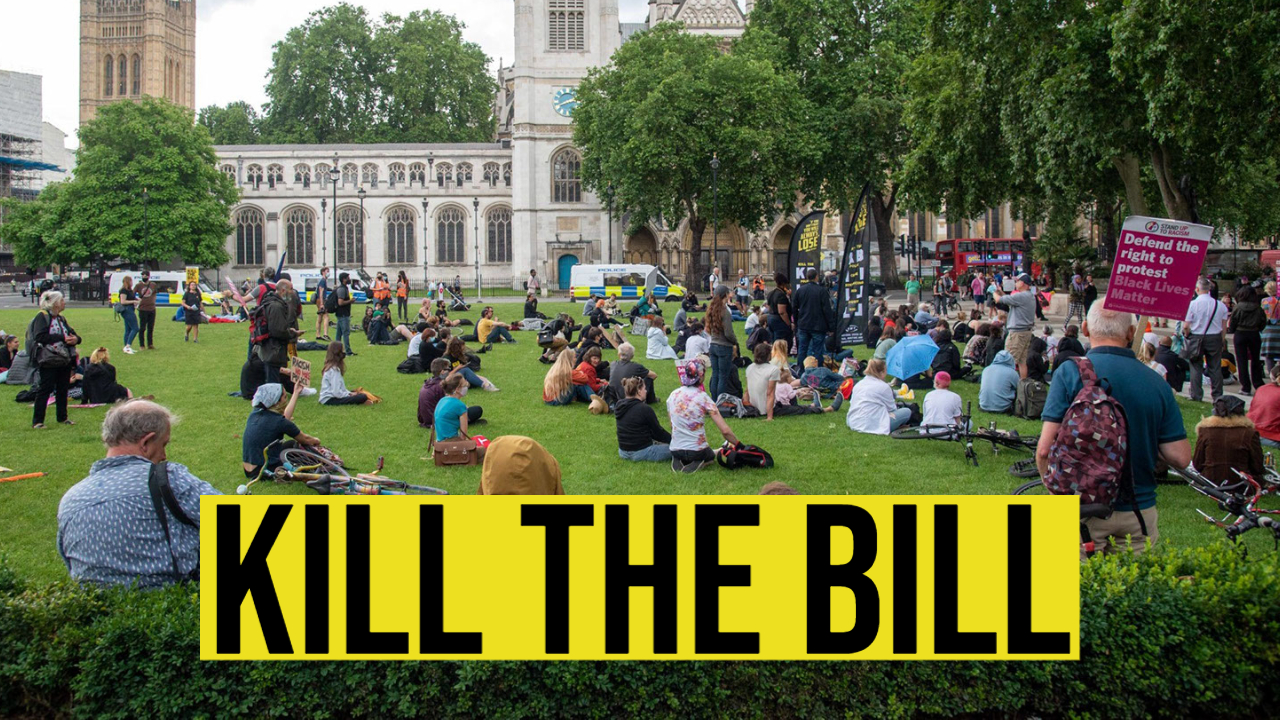
6. **The Controversial Stand on UK Police Protection and its Evolution**Central to Prince Harry’s initial reluctance to return to the U.K. with his family was the contentious issue of police protection. In 2020, a government decision stripped him, Meghan, and their children of automatic police protection when they visited Britain, triggering a lengthy legal appeal by the Duke. This decision was a profound blow, making him lament that his children, Archie and Lilibet, might never be able to safely return to the country where they hold a place in the line of succession.
Harry’s concerns were deeply rooted in specific, credible threats he had received. He explicitly mentioned facing threats from “Al Qaeda and neo-Nazi groups,” articulating that the fears of violence were too significant a gamble to take with his young family. This led him to the heartbreaking conclusion that he couldn’t envision a world where he would bring his wife and children back to the U.K. at that point, a stance he publicly articulated in a BBC News interview in May.
He conveyed the profound sadness of this situation, emphasizing, “I think that it’s really quite sad that I won’t be able to show my children my homeland.” This emotional connection to Britain, coupled with the security risks, created an agonizing dilemma for the Duke. It highlighted the impossible position he felt he was in: choose between his children’s safety and their connection to their heritage and royal lineage.
However, the recent shift in his perspective, expressing a desire to spend more time in the U.K. and bring his children, places this security concern at an historic crossroads. This change directly clashes with Meghan’s steadfast refusal to return, largely due to her insistence that England is not safe for their children. The ongoing tension over police protection remains a critical, unresolved factor, symbolizing the deeper ideological and practical divide within the Sus family regarding their future geographic and familial allegiances. Meghan has been firm that they have “sheltered life, good schools, friends, protection” in the U.S.
Read more about: 14 Jaw-Dropping ’80s Moments That Felt Like Blockbuster Movie Plots – And Are Still Shaping Our Reality Today!
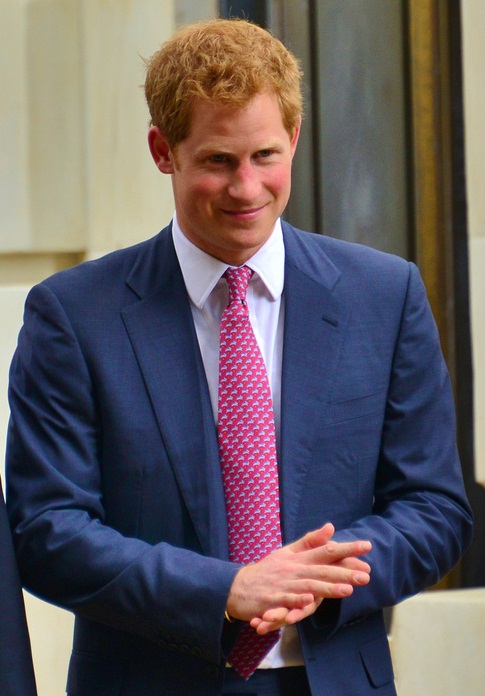
7. **The Enduring Impact of His Memoir “Spare” and its Repercussions**Prince Harry’s 2023 memoir, “Spare,” proved to be a global sensation, but not without significant controversy and enduring repercussions. Among its most striking revelations was Harry’s admission that he flew on six missions in Afghanistan that resulted in him killing 25 Taliban members. He described a detached perspective during these missions, writing that he felt he was trained to view them not as “people” but as “chess pieces” that had been taken off the board.
Harry’s detailed account, while stark, was presented with a certain dispassion. He clarified his feelings about the number, writing, “It’s not a number that gave me any satisfaction. But neither was it a number that made me feel ashamed.” This particular passage sparked immediate and widespread debate, dissecting the ethics of his actions and the implications of sharing such sensitive details publicly. It was a moment of raw, unvarnished honesty that few had anticipated.
The Duke himself framed the memoir not as an act of retribution, but as a necessary correction to existing narratives. He adamantly insisted that the book was “not about revenge” or “dirty laundry.” Instead, he saw it as “a series of corrections to stories already out there. One point of view had been put out and it needed to be corrected.” For Harry, his “conscience is clear,” and he maintained that “It was a difficult message, but I did it in the best way possible.” He concluded, “It is not about revenge, it is about accountability.”
However, the revelations within “Spare” quickly led to tangible consequences. The claims of killing Taliban members prompted significant backlash, not only from Taliban members themselves, but also from British politicians and military figures who voiced concerns about the safety of troops. Notably, Pen Farthing, a British former Royal Marines commando, was reportedly evacuated from Kabul in January 2023 to avoid “potential reprisal attacks on ex-forces people.” The ongoing ripple effect of his memoir continues to define a portion of his public identity and influences the complexities of his current standing, underscoring how deeply his past actions continue to shape his present reality.”
Having navigated the intricate dance of his present circumstances, Prince Harry’s journey is far more than a collection of recent headlines; it is built upon a profound foundation of early experiences, defining military service, and transformative personal initiatives. To truly grasp the Duke’s evolving narrative, one must explore the pivotal moments that shaped his character and purpose, long before his current crossroads emerged. From his formative years under the gaze of a dynamic mother to the grit of the battlefield and the innovative spirit of the Invictus Games, these chapters illuminate the ‘why’ behind the man we see today. It’s a testament to a life lived in the public eye, yet consistently striving for meaning beyond mere royal obligation.
We now turn our attention to the foundational elements of Harry’s life, piecing together the events that have made him the complex and driven individual he is today. This deeper dive will explore his early life, his distinguished military career, the genesis and impact of the Invictus Games, and the landmark decision that reshaped his destiny.
Read more about: Jennette McCurdy’s Candid Revelations: Unpacking Her Complex Relationship with Ariana Grande
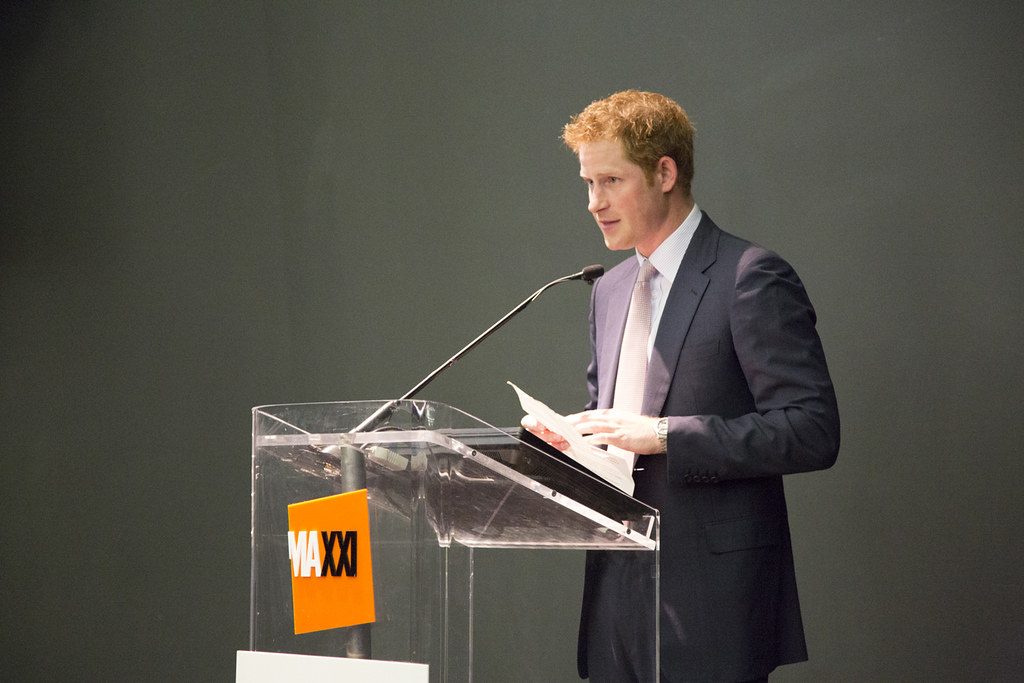
8. **Early Life and Education: A Royal Childhood with a Difference**Prince Henry Charles Albert David, universally known as Harry, entered the world on September 15, 1984, the second son of King Charles III (then Prince Charles) and the beloved Diana, Princess of Wales. From his christening, he was affectionately known as Harry, a name that would quickly become synonymous with a vibrant, often mischievous, royal spirit. Growing up primarily at Kensington Palace and Highgrove House, Harry, alongside his elder brother William, experienced a childhood that Diana meticulously curated to be far from the traditional royal mold, intentionally broadening their horizons beyond palace walls to include trips to Walt Disney World, McDonald’s, AIDS clinics, and homeless shelters.
This deliberate upbringing aimed to instill in the young princes a profound understanding of ordinary life and societal challenges, a stark departure from the sheltered existence of previous generations of royals. Harry’s early exposure to public life began with official visits as young as 1985 to Italy, and later to Canada, hinting at the global responsibilities that would later define much of his adult life. However, this period of relative normalcy was shattered by the very public divorce of his parents in 1996, followed by the tragic death of his mother in 1997, an event that profoundly impacted the then 12-year-old prince and undoubtedly shaped his perspective on media scrutiny and personal loss.
Like his father and brother before him, Harry received a private education, attending Jane Mynors’ nursery, Wetherby School, and Ludgrove School before being admitted to the prestigious Eton College. His enrollment at Eton marked a continuation of his elder brother’s path and a nod to his mother’s family tradition, diverging from the broader royal practice of attending Gordonstoun. Here, a unique ‘pressure cooker agreement’ with the tabloid press allowed him to study without constant intrusion in exchange for occasional photograph opportunities, a delicate balance he would grapple with throughout his life.
At Eton, Harry excelled as a “top tier athlete,” participating in competitive polo and rugby union, showcasing a physical aptitude that contrasted with his academic record of a B in art and a D in geography at A-Level. His time at Eton wasn’t without its own minor controversies, including claims from a former teacher regarding academic assistance, which both he and the institution denied. Following his formal education, Harry embarked on a transformative gap year, spending time as a jackaroo on a cattle station in Australia and dedicating himself to working with orphaned children in Lesotho, an experience that inspired his documentary film, *The Forgotten Kingdom: Prince Harry in Lesotho*.
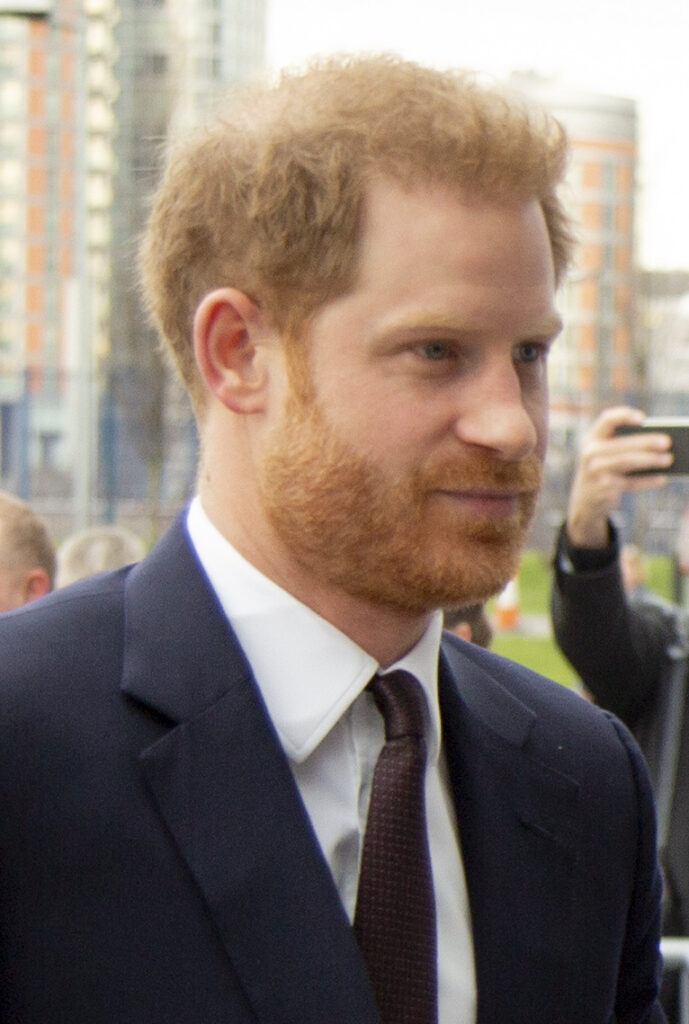
9. **Forging a Path: Sandhurst and First Deployment to Afghanistan**Driven by a profound sense of duty and a desire to serve, Harry eschewed the traditional university path many royals followed, instead opting for a military career. In September 2004, he successfully passed the Regular Commissions Board and, in May 2005, entered the Royal Military Academy Sandhurst, where he trained as Officer Cadet Wales. His dedication and commitment saw him commissioned as a Cornet in the illustrious Blues and Royals regiment of the Household Cavalry in April 2006, followed by a promotion to lieutenant in April 2008, signifying his steady rise through the ranks.
The prospect of Harry’s deployment to Iraq with his unit in 2007 ignited a significant public debate. While the Ministry of Defence initially announced intentions to shield him from the immediate front line due to the inherent risks his presence would pose, Harry himself was resolute. He famously stated that he “wouldn’t drag my sorry ass through Sandhurst” if he were prevented from serving on the front line, a clear articulation of his commitment to his fellow soldiers and his desire for genuine service. This fierce determination saw him complete the Troop Leaders’ Course and take charge of a troop of 11 soldiers and four reconnaissance vehicles.
Despite initial plans for Iraq being reconsidered due to security concerns, Harry was secretly deployed to Helmand Province in Afghanistan as a joint terminal attack controller for ten weeks in 2007-2008. This clandestine deployment, maintained under a strict media blackout by British and Canadian authorities, was a testament to his determination to experience active service. However, the blackout was ultimately breached by international media outlets, leading to the immediate need for his extraction due to fears that his increased visibility would put him and his unit at undue risk.
During this initial tour, Harry proved himself to be a capable and courageous soldier, reportedly helping Gurkha troops repel an attack from Taliban insurgents and performing patrol duty in hostile areas. His service marked a historic moment, making him the first member of the British royal family to serve in a war zone since his uncle, Prince Andrew, during the Falklands War. Upon his return, he was recognized for his valor, receiving an Operational Service Medal for Afghanistan from his aunt, Princess Anne, in May 2008, a tangible symbol of his commitment and sacrifice.
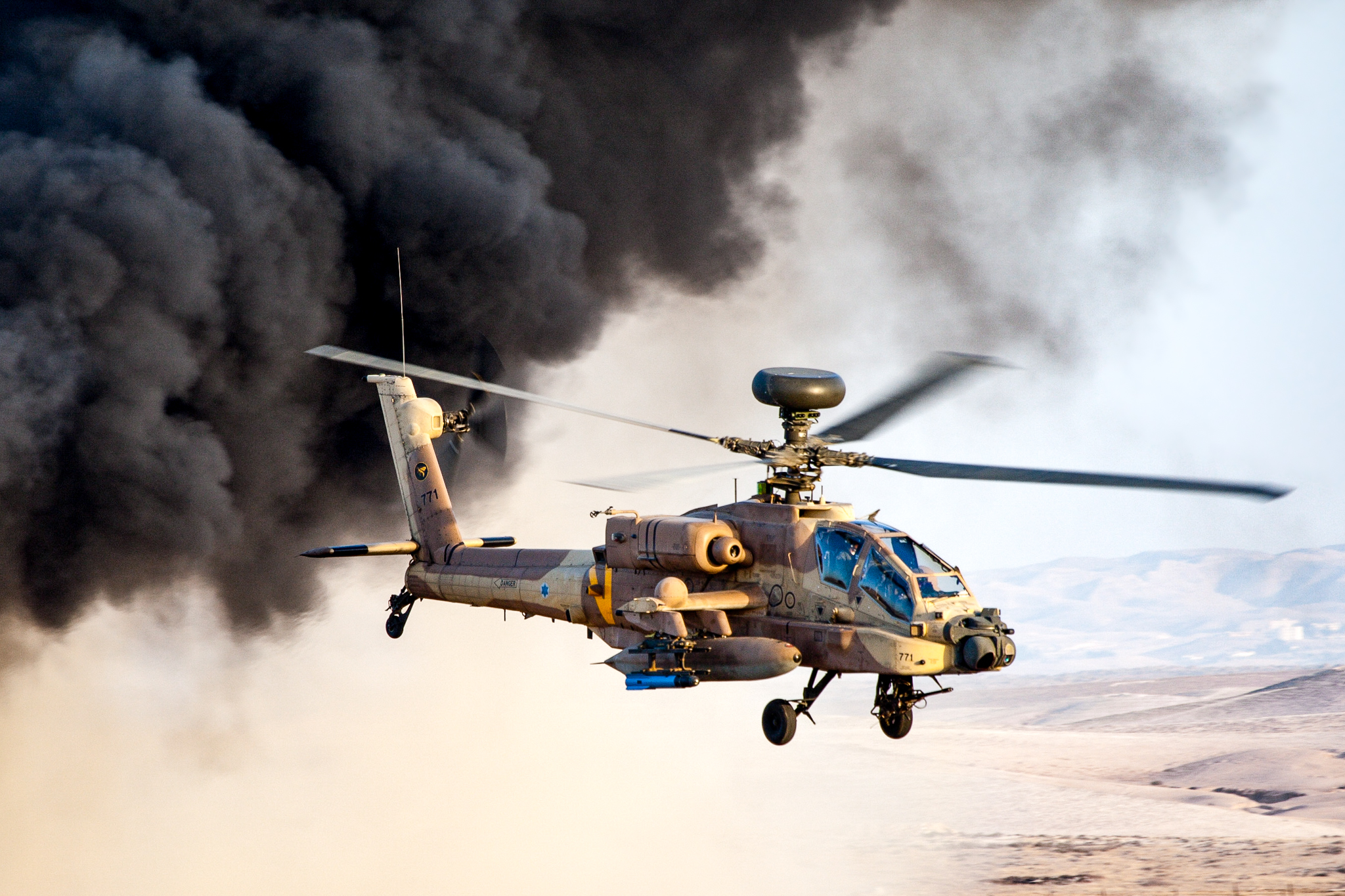
10. **Soaring High: Apache Pilot and Second Tour of Duty**Following his first deployment, Prince Harry sought to further his military capabilities by pursuing a demanding path in Army aviation. In October 2008, it was announced that he would follow in the footsteps of his brother, father, and uncle by learning to fly military helicopters. He undertook rigorous training at the Defence Helicopter Flying School at RAF Shawbury, a challenging endeavor that even saw him briefly fail his pilot’s theory test in February 2009, only to overcome it with sheer perseverance. His efforts culminated in receiving his flying brevet (wings) from his father in May 2010 and the prestigious Apache Flying Badge in April 2011, affirming his skill and dedication.
With his new qualifications, Harry was promoted to captain in April 2011 and quickly made himself available for deployment in current operations in Afghanistan as an Apache helicopter pilot. This commitment led him to a US military base in California in October 2011, where he completed highly specialized helicopter gunship training, including live-fire exercises and advanced environmental and judgment training. Impressively, he was reported to be at the top of his class during this extensive training at the Naval Air Facility, El Centro, showcasing his exceptional aptitude for the complex role.
On September 7, 2012, Harry arrived at Camp Bastion in southern Afghanistan, embarking on a significant four-month combat tour as a co-pilot and gunner for an Apache helicopter with the 662 Squadron, 3 Regiment, Army Air Corps. His presence, once again, drew immediate attention, with the Taliban swiftly threatening his life within days of his arrival. While Defence Secretary Philip Hammond affirmed that “additional security arrangements” were in place, he emphasized that Harry would face “the same risk as any other Apache pilot” in combat, a testament to his integrated role.
This second deployment saw Harry engage directly in combat operations. Intriguingly, in his 2023 memoir, *Spare*, he later revealed that he flew on six missions that resulted in him killing 25 Taliban members, a stark detail presented with a detached perspective, comparing the experience to playing video games. He clarified that this was not a number that brought him satisfaction or shame, but rather a consequence of his training. He returned from his 20-week deployment in January 2013, having successfully qualified as an Apache aircraft commander, a distinguished achievement that cemented his reputation as a dedicated and proficient military officer, whose experiences would profoundly influence his future endeavors.
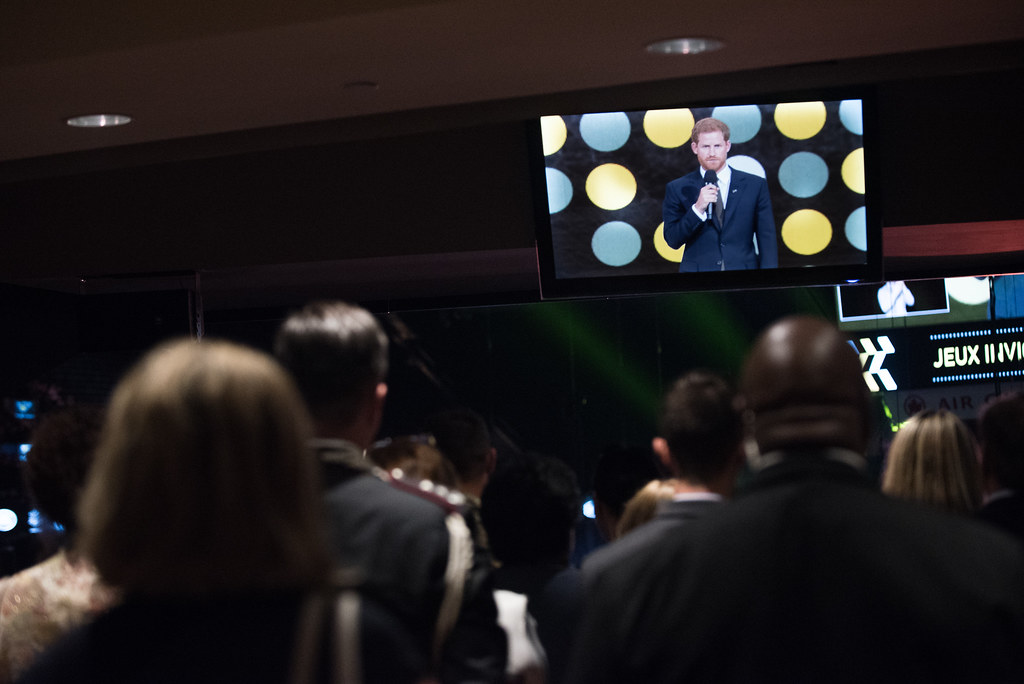
11. **Beyond the Battlefield: The Vision and Launch of the Invictus Games**Upon completing his combat deployments, Prince Harry transitioned from direct combat roles to a staff officer position within HQ London District in January 2014, taking on responsibilities that included coordinating significant Army projects. It was during this period that his most impactful legacy, the Invictus Games, began to take shape. Inspired by his observations of the Warrior Games in the United States, Harry envisioned a Paralympic-style international sporting event specifically for injured, wounded, and sick servicemen and women, recognizing the profound therapeutic power of sport in recovery and rehabilitation.
With remarkable passion and drive, Harry launched the inaugural Invictus Games on March 6, 2014, with the event set to take place in London later that September. His personal investment in the project was undeniable, as he dedicated himself wholeheartedly to its success, even describing it as “basically my full-time job at the moment.” This wasn’t merely a royal patronage; it was a mission born from his own military experiences and a deep empathy for his fellow veterans who faced similar struggles in adjusting to post-service life or dealing with combat injuries.
To promote the Games, Harry engaged in various public outreach efforts, meeting British hopefuls, attending a ticket sale launch where he tweeted from the official Invictus Games account as its president, and giving interviews, including one with BBC Radio 2. He also penned an article for *The Sunday Times*, articulately recounting how his experiences in Afghanistan had galvanized his resolve to help injured personnel and directly inspired his creation of the Invictus Games. His presence and active participation at all events from September 8 to 14, 2014, underscored the profound personal significance of the Games, ensuring their successful debut and establishing them as a beacon of hope and recovery.
The Games quickly proved to be a transformative force, not just for the competitors but for Harry himself, providing him with a renewed sense of purpose that he acknowledged had been missing since the end of his decade-long military career in 2015. He continued to be deeply involved with supporting wounded service personnel, taking on a new role with the London District’s Personal Recovery Unit, working alongside charities like Help for Heroes and the Royal British Legion. This extensive work involved visiting numerous recovery centers such as The Battle Back Centre and Fisher House UK, demonstrating his ongoing commitment to the physical and mental well-being of veterans.

12. **A Global Citizen: Supporting Wounded Personnel and Australian Secondment**Prince Harry’s dedication to supporting wounded service personnel extended beyond the Invictus Games, evolving into a more structured and hands-on approach. In January 2015, he took on a significant new role within the Ministry of Defence’s Recovery Capability Programme. This involved working alongside Case Officers in the London District’s Personal Recovery Unit, focusing on ensuring that injured personnel received comprehensive recovery plans. This initiative was a collaborative effort, established in partnership with prominent charities such as Help for Heroes and the Royal British Legion, further solidifying the network of support available to veterans.
His commitment was evident through numerous practical engagements, including visits to vital recovery centers across the UK. Harry toured The Battle Back Centre, established by the Royal British Legion, and Fisher House UK at the Queen Elizabeth Hospital Birmingham, a partnership involving Help for Heroes and the Fisher House Foundation, a key sponsor of the Invictus Games. He also visited Phoenix House in Catterick Garrison and Chavasse VC House Personnel Recovery Centre in Colchester, both run by Help for Heroes. These visits provided him with direct insight into the challenges faced by recovering service members and allowed him to offer tangible support and encouragement.
As his military career drew to a close, Kensington Palace announced in March 2015 that Harry would be leaving the Armed Forces in June. However, before his official departure, he embarked on a unique and final military experience: a four-week secondment to the Australian Defence Force (ADF) throughout April and May. This attachment underscored his enduring commitment to military life and provided him with invaluable international experience, working across various army barracks in Darwin, Perth, and Sydney.
During his time with the ADF, Harry engaged in a diverse range of intensive training activities. He participated in detachments to NORFORCE and an aviation unit, trained with the elite Special Air Service Regiment (SASR)—including fitness tests and live-fire shooting exercises—and undertook insertion training using rigid-hull inflatable boats. In Sydney, he experienced urban operations training with the 2nd Commando Regiment, which involved remotely detonating improvised explosive devices and rappelling from buildings. He even co-piloted an Army Black Hawk helicopter over Sydney and engaged in counter-terrorism training with Royal Australian Navy clearance divers. This comprehensive experience highlighted his versatility and dedication, culminating in the end of his ADF attachment in May 2015 and his resignation from his short service commission in June 2015, marking the conclusion of a decade-long military career that he later described as “the happiest times in my life.”
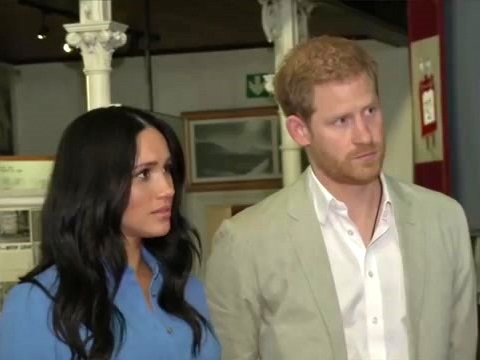
13. **The Genesis of Change: Falling in Love and the Seeds of “Megxit”**Prince Harry’s personal life underwent a significant transformation in mid-2016 when he began a relationship with American actress Meghan Markle. Their initial connection, reportedly facilitated via Instagram or a blind date, blossomed rapidly but was immediately thrust into the intense glare of the public spotlight. Recognizing the intrusive nature of the press, Harry took the unusual step of having his communications secretary release a statement in November 2016, expressing his personal concern about the pejorative and false comments directed at his new girlfriend by both mainstream media and online trolls. This early protective stance was a clear indication of the challenges ahead and his determination to shield his relationship from the same pressures that had plagued his mother’s life.
Their relationship progressed quickly, culminating in their first public appearance together at the Invictus Games in Toronto in September 2017, a symbolic moment where his public and private worlds intertwined. Their engagement was formally announced on November 27, 2017, by Harry’s father, an announcement that was met with widespread positive commentary, particularly regarding the inclusion of a mixed-race person into the British royal family. The wedding itself, held at St George’s Chapel, Windsor Castle on May 19, 2018, was a global spectacle, though the couple later revealed they had privately exchanged vows in their garden three days prior, a testament to their desire for a more personal, intimate commitment amidst the grandeur.
Upon their marriage, Queen Elizabeth II conferred the title of Duke of Sus upon Harry, making Meghan the Duchess of Sussex. The couple initially resided at Nottingham Cottage within Kensington Palace before briefly leasing WestfieldLarge in the Cotswolds, which they gave up after paparazzi photos of the interior were published. Their eventual move to Frogmore Cottage in the Home Park of Windsor Castle, a gift from the Queen, was intended to provide more privacy and space as they started their family. The Crown Estate refurbished the cottage, with Harry later reimbursing the costs beyond basic maintenance, demonstrating their intention to be financially responsible.
On May 6, 2019, their son, Archie, was born, further deepening their commitment to building a life together. However, the period following their wedding saw increasing tensions with the British media and within the broader royal family. The relentless scrutiny, coupled with Meghan’s adaptation to royal life and the couple’s desire for a more independent path, began to strain the traditional structures. These pressures, alongside their burgeoning family, laid the groundwork for a monumental decision that would redefine their roles and reshape their future, culminating in a significant shift away from their established royal duties.
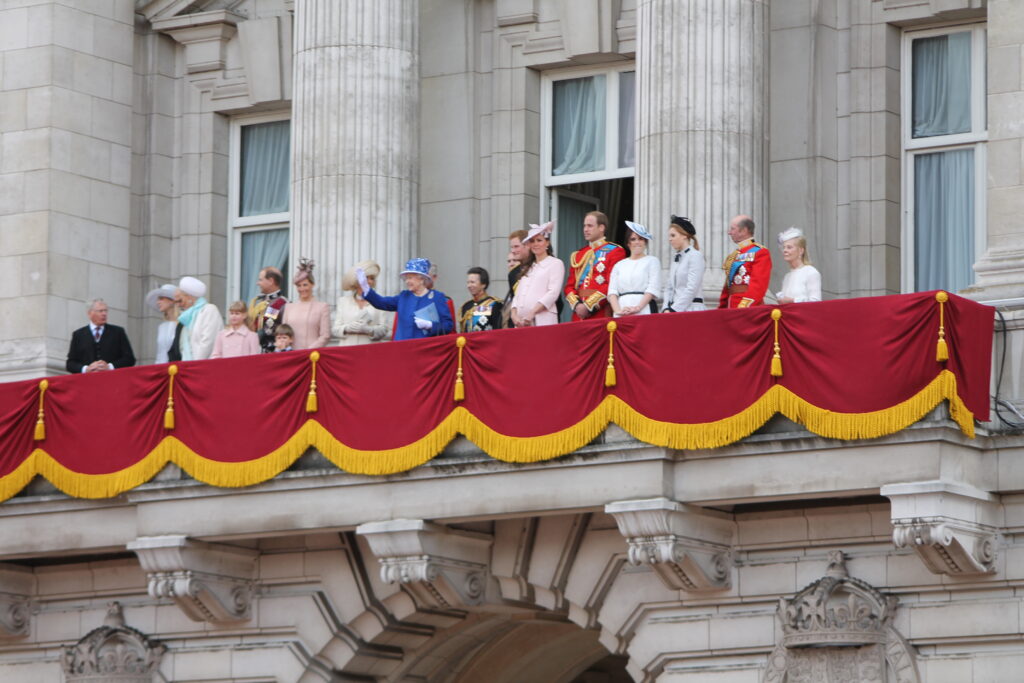
14. **The Unprecedented Shift: Stepping Back from Royal Duties**By January 2020, the mounting pressures and divergent aspirations of Prince Harry and Meghan, Duchess of Sus, reached a critical juncture, leading to the landmark decision to “step back from Royal duties, including official military appointments.” This unprecedented move, often colloquially referred to as ‘Megxit,’ sent shockwaves through the monarchy and across the globe. It was not merely a departure from royal engagements but a profound renegotiation of their relationship with the institution, marking a clear intent to forge an independent path.
One of the most significant consequences of this decision was the relinquishment of Harry’s cherished honorary military appointments. While he described his decade in the army as “the happiest times in my life,” an agreement reached in February 2021 confirmed he would give up his position as Captain General Royal Marines, along with other esteemed military titles. This sacrifice underscored the gravity of their choice and the difficult compromises made in their pursuit of a new life, free from the constraints of being working royals.
Following their departure, the couple relocated to Meghan’s native Southern California, establishing a new base in their $14.6 million home in Montecito. This move also saw the launch of Archewell Inc., a Beverly Hills-based venture encompassing both for-profit and not-for-profit business organizations. This new platform allowed them to pursue their philanthropic endeavors and media projects on their own terms, signaling a decisive shift from traditional royal patronage to independent entrepreneurialism and activism.
Their new chapter was largely defined by a series of high-profile media engagements, most notably the much-publicized American television interview *Oprah with Meghan and Harry* in March 2021, and the Netflix docuseries *Harry & Meghan*, released in December 2022. These platforms became avenues for them to share their experiences and perspectives, offering an intimate, narrative-driven account of their time within the royal family and their reasons for stepping back. These media ventures were crucial in shaping their public image and articulating their vision for a future defined by purpose, independence, and a commitment to their chosen causes, continuing to make them subjects of intense global interest and scrutiny.
Prince Harry’s journey is undeniably a tapestry woven with threads of public duty, personal struggle, and an unwavering quest for authentic purpose. From his spirited youth under a revolutionary royal mother, through the crucible of military service and the innovative launch of the Invictus Games, to the profound decision to step back from royal life, each chapter reveals a man continually striving to define his own narrative. His story, marked by both triumphs and profound challenges, offers a compelling exploration of identity, resilience, and the relentless pursuit of a meaningful life beyond the confines of inherited expectations. And as he continues to forge this unique path, the world watches, ever curious, as the Duke of Sus writes his next chapter.”

